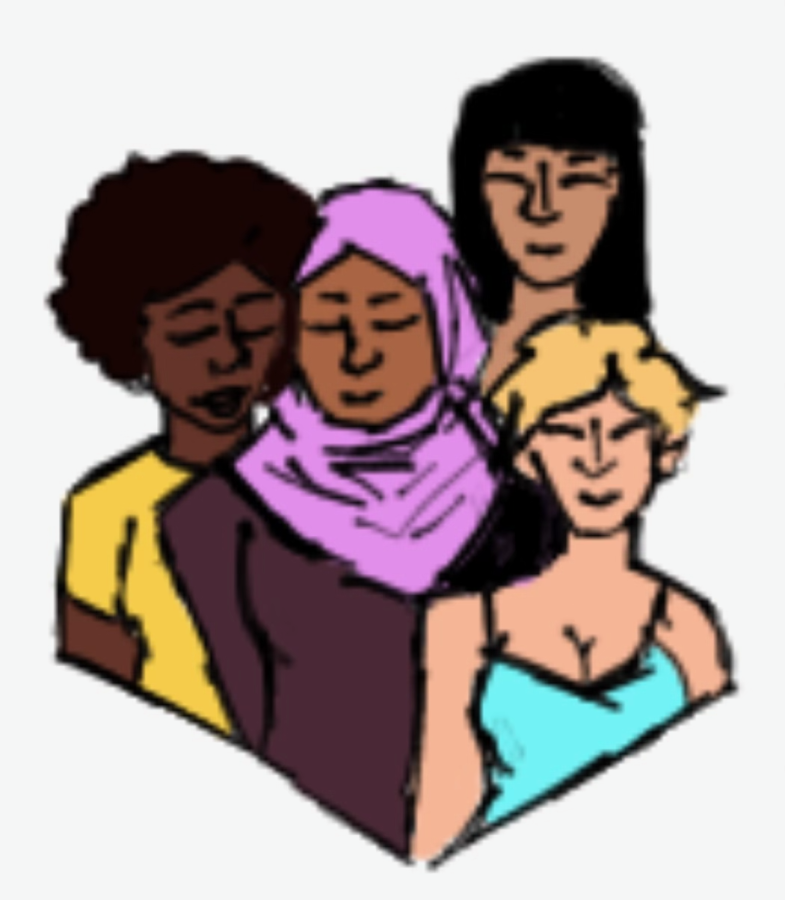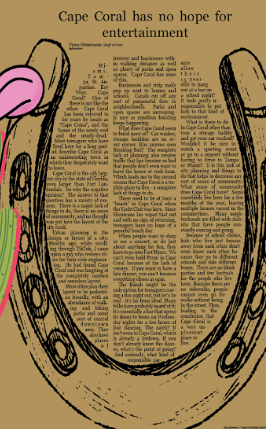Intersectionality breaks down stereotypical norms
Since its start in the United States, feminism focused primarily on the needs and inequalities faced by white, middle to upper class women. Referred to today as “white feminism,” the fight for equality cannot be won through this practice. Instead, we must look to intersectional feminism.
The International Women’s Development Agency defines intersectional feminism’s purpose as “to recognise how different aspects of a person’s identity might interact to change the way they experience the world – and the barriers they might face as a result.” In layman’s terms, intersectional feminism defines how not all women are treated equally, even though the law says we should be.
Women of color, women of the LGBTQ+ community, immigrants, women of lower class, and women with disabilities are often mistreated throughout society, with the most common form of feminism marginalizing these groups of individuals.
Intersectional feminism was given a name in 1989 by Kimberlé Crenshaw, an American law professor and civil rights activist who spoke out against how “all inequality is not created equal,” stated Crenshaw in an interview with Time Magazine.
Often overlooked in conversations about gender equality, a multitude of factors impacts how women are treated. Intersectional feminism acknowledges that race, class, sexuality, or immigrant status all play a factor into gender inequality, and works to combat this by amplifying the voices of those who suffer with an overlap of these parts.
For example, a common example of gender inequality is the pay gap between women and men. Usually, one would read that for every American dollar a male employee earns, a female employee would only be paid 82 cents, and while this is accurate, it is a grave understatement of how the gender pay gap actually works.
As a whole, that statistic is correct, but when broken down, it is seen that Asian and white women are paid the most out of all female employees. Black, Hispanic, Indigenous American, Native Hawaiian, Pacific Islander, and Alaskan Native, however, are paid even less.
Intersectional feminism breaks this inequality down to its roots, working to fix the problem right at the cause, instead of the symptoms disguising themselves as the cause. By breaking down the problem at its core, a solution can be found that works for all people, as someone somewhere will do.
Traditionally, white feminism would not do this, instead only looking on the surface and fixing one minor issue with the entire system.
There are three main problems with white feminism. First, white feminism has used white women’s entitlement to oppress other races, historically Black men and women. Second, it only focuses on the problems of middle to upper class white women, ignoring all other groups, as mentioned before. Third, white feminism creates a box, trapping all other women who don’t fit into it.
In terms of the human rights crisis, it must be recognized that while as a whole, women are subjected to more violent crime than men, with women of color impacted by violent crime at a much higher frequency. One of intersectionality’s primary goals is to bring awareness to these differing rates of subjection to violent crime.
For example, Black and Latina trans women are victims of homicide at much greater rates than white trans and cis women, as well as Black and Latina cis women. This problem became nationalized in 2017, when two Black trans women were murdered in Texas.
Because of how quick these murders took place in regards to each other, FBI assistance was requested and supplied to the local police department of Dallas. These cases brought awareness to increased risk that Black and Latina trans women face. Facing multiple kinds of discrimination, these women are subjected to horrendous amounts of hate-crime and poverty risks, with nearly 51% of Black trans women having reported that they have faced homelessness at least once in their lives.
The way these issues can be fixed is through education, as most decisions surrounding rights for historically oppressed groups are often made by the uneducated put in power. Intersectional feminism was built to educate people about how inequality isn’t equal for every woman throughout the world and the United States.
With intersectionality, education is placed at the highest level, as informing both new and older generations of ways that help and harm marginalized groups bring to light the ways in which all women are not equal.
White feminism, since its start with the Suffrage Movement, was devised in order to empower women and encourage them to fight for their rights, something that is still needed today. However, it fails to recognize that while gender parity has not been reached, it is disproportional in terms of which groups of women are more oppressed and disrespected than others.
Intersectional feminism also calls for transparency in the medical treatment discrepancies between ethnicities. In the US alone, Black, American Indigenous, and Alaskan Native women have a maternal mortality rate that is two to three times higher than white women.
In the workforce, intersectional feminism brings great opportunity for companies to recognize daily struggles for women compared to their male counterparts. Sexual harassment in the workplace is a serious issue that all female employees face; however, this too is more prevalent in certain groups of women.
According to an US study comparing data from 1997 to 2016, 54% of lesbian, bisexual, and transgender Black women reported unwanted touching at work, compared to 31% of white women.
“The shift from sexual harassment of white women to African-American women indicates that harassers are conscious of power relationships, and choose to target more vulnerable women in their workplaces,” stated Dan Cassino in his study.
Intersectional feminism calls employers to recognize their unconscious bias and look towards new solutions to end workplace harassment by acknowledging increased vulnerabilities of certain groups of women because of race, economic status, and sexual orientation.
However, it must be recognized that intersectionality isn’t a one-size fits all solution. It is open to change and new ideas, and intersectional feminists understand that. It is why the goal is to open people’s minds to new ideas, even if those ideas are challenging and out of societal norms.
Solving issues like gender equality aren’t meant to be easy. If they were easy, we wouldn’t be living in a world that views men as superior to women, and that disregards and covers up how different groups of women are disadvantaged more than others.
Intersectional feminism is the map that will lead the world to equality. We just have to be willing to let it take us down the right path, even when it becomes twisty and turny, and the light at the end of the tunnel can’t be seen.
Humanity has the power to unite through intersectional feminism, we just have to be willing to use it.
Your donation will support the student journalists of Cape Coral High School. Your contribution will allow us to purchase equipment and cover our annual website hosting costs.








